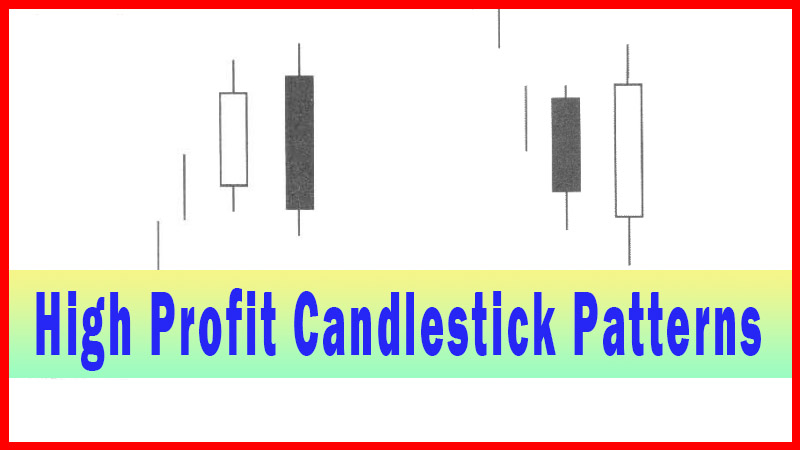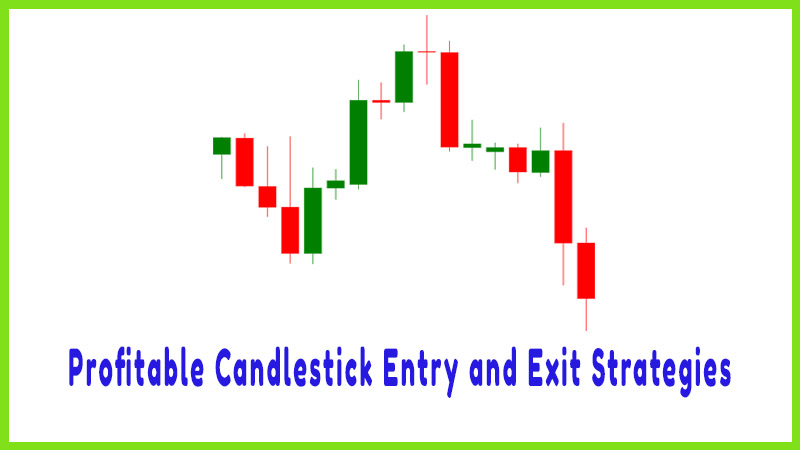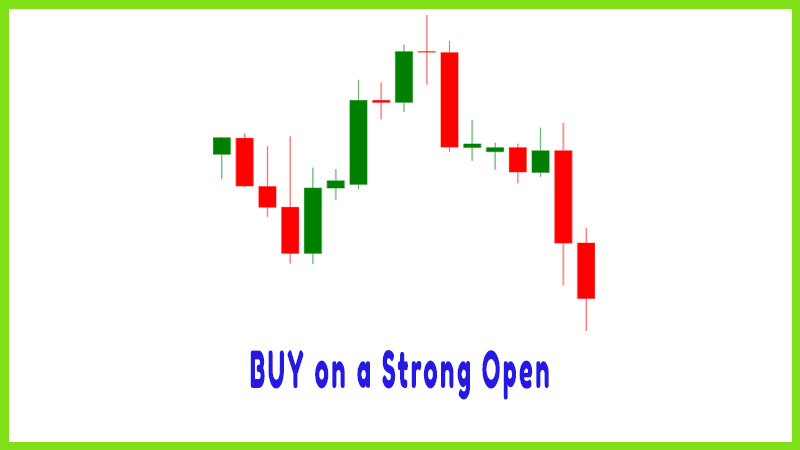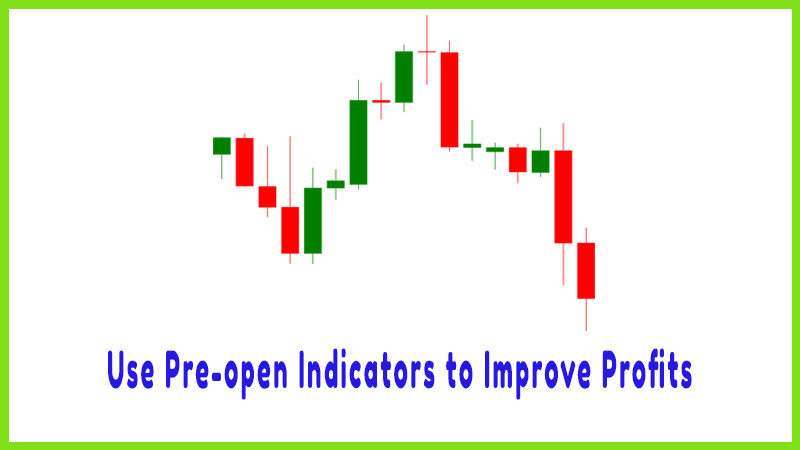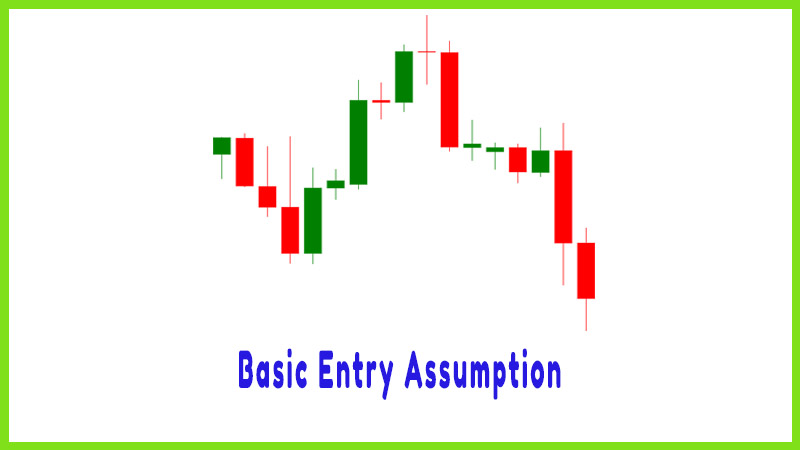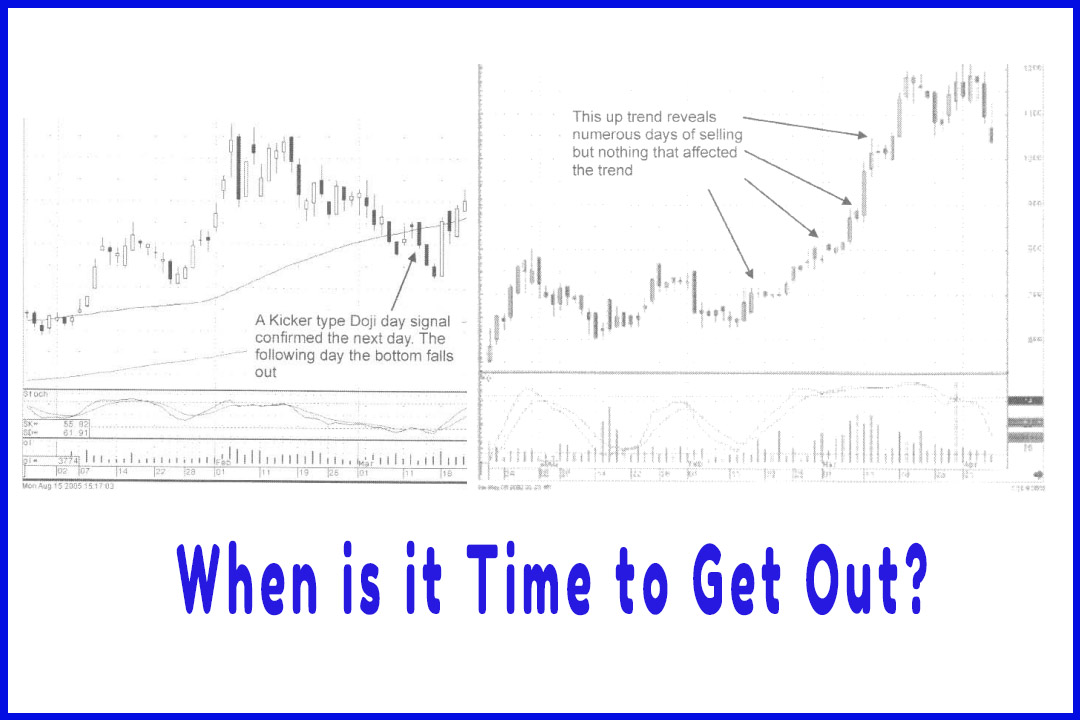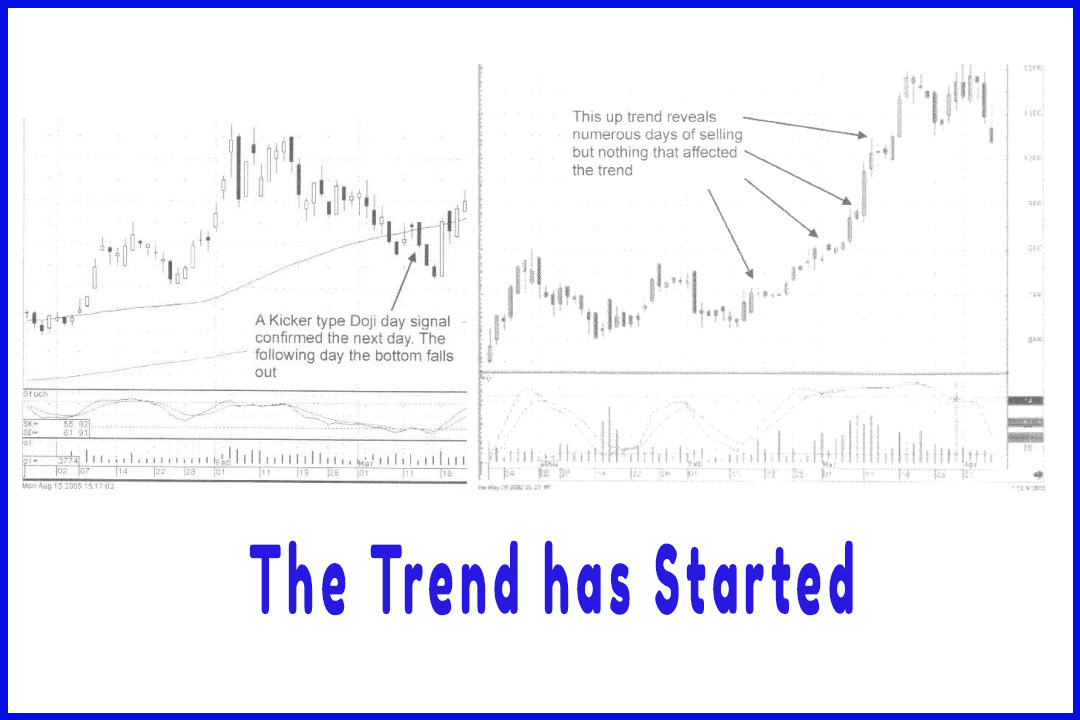Invest with the Probabilities
when invest with the probabilities, how do invest with the probabilities, top 10 invest with the probabilities, why do invest with the probabilities
Course: [ How To make High Profit In Candlestick Patterns : Chapter 8. Candlestick Entry and Exit Strategies ]
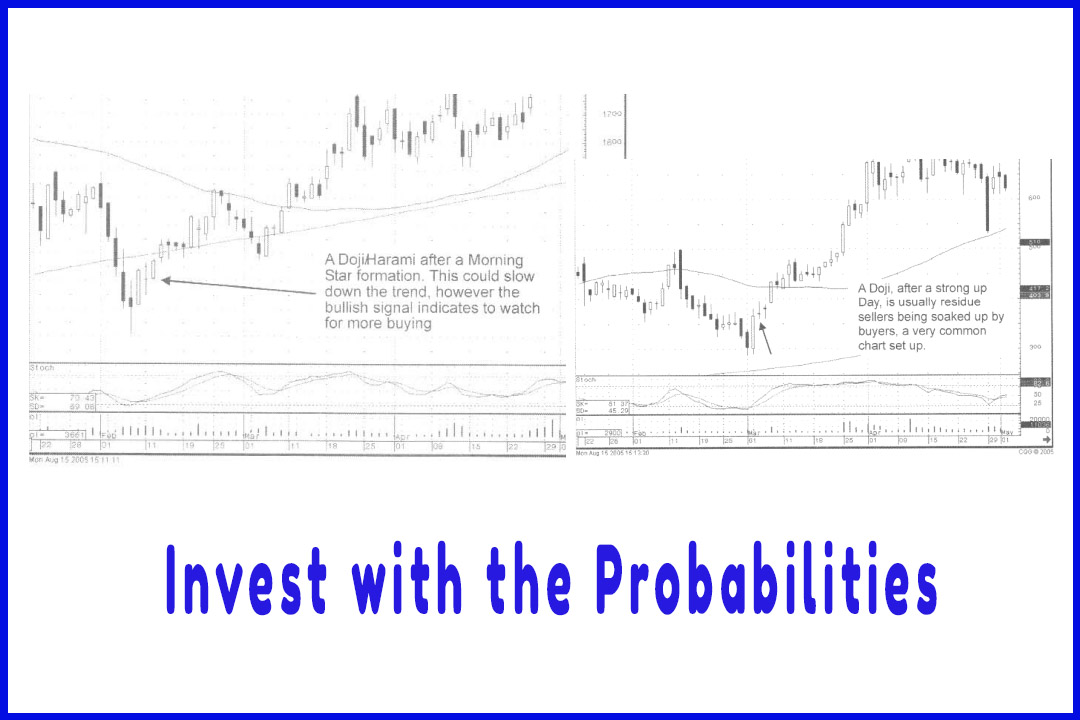
Not every trade is going to shoot straight up after the buy signal appears. There will be many entry points that fit the perfect buying conditions, yet fade just after you fill your position. Mistake? Depends on how the rest of the day finishes.
Invest with the Probabilities
Not every
trade is going to shoot straight up after the buy signal appears. There will be
many entry points that fit the perfect buying conditions, yet fade just after
you fill your position. Mistake? Depends on how the rest of the day finishes.
Will every trade work the way the signals indicate? Definitely not! Nevertheless,
back to the basics. You are looking for the best possible place for your money
to make the best returns while minimizing risk. Hopefully, the signal itself is
representing well above a 50/50 probability of making money This ratio maybe
60%, 68%, or 74%. Fine-tuning the entry process may increase the probabilities by another 3%, 4%, or 5%. A good evaluation of the entry also has the element of
limiting the losses. If a trade is placed, and the basis for entering the trade
disappears immediately, and the buyers have disappeared, then liquidate the
trade immediately. The loss may only be 1%, 3%, or maybe as much as 5% if it is
liquidated that day or on the open the next day. The gains get an opportunity
to run when the buy signal is not negated. The losses are trimmed immediately
if the signal fizzles. All from a simple premise! Are the buyers still in
control?
There is
a good rule of thumb for protecting a newly established position. If after a buy
signal, a position is established, and the prices back off by the end of the
day, closing more than halfway down the bullish candle that identified the buy
signal, close out tire position. Statistically, this represents that the sellers
still have the upper hand. However, keep in mind that a buy signal did form at
the bottom of the trend. Despite having to exit the trade at a small loss, be
prepared to see new buying evidence soon. If so, re-establish the position. The
initial buy signal occurred for some reason.
The most
important decision-making area is at the reversal points. Is it a reversal or
is it a pullback in the trend? That is where the analysis and monitoring is
most important. A buy signal requires follow-through. The weight of a sustained
downtrend needs a strong change of sentiment to reverse its course. If the
reversal has only two or three days of an up move, do not be hesitant to take
quick profits once a weak signal appears. There may be a more opportune time to
get into a position if a pullback occurs. Will the current low hold, act as
a support level? You should be watching for a new buy signal. This is your
opportunity to get into the position again.
If the
previous low does not hold and prices go lower, watch for the next buy signal to
occur at lower levels. This is true whether a short-term trader or a
long-term holder.
Fig. 9-6,
Hovnanian Enterprises Inc. illustrates the Candlestick investors’ minor
dilemma. All the parameters say to buy this stock. A Hammer is followed by a
Bullish Engulfing pattern. The stochastics have turned up, volume is picking
up. But the next day the price opens much lower than what would indicate that
buyers were still active. What is the best way to enter this position? Are the
sellers taking back control for some reason? Maybe the indexes opened much
lower. In keeping with the practice of buying a stock that is going up, the
best entry strategy would be to put a buy stop at the close of the previous
day. If the buyers are still participating, it will be evident when the price
moves from the lower ‘open’, and then back up through the close of the previous
day. Buying the stock at a slightly higher price is a small premium to pay for
knowing that you are getting in a position when the buyers are around.
If the
buy stop never gets executed, the lower open and a close below the previous
day's close would form a Harami. This formation would indicate that the buying
had stopped. You are not in a position where the sellers may be taking control
again. If the buy stop is executed, a buy signal is confirmed.
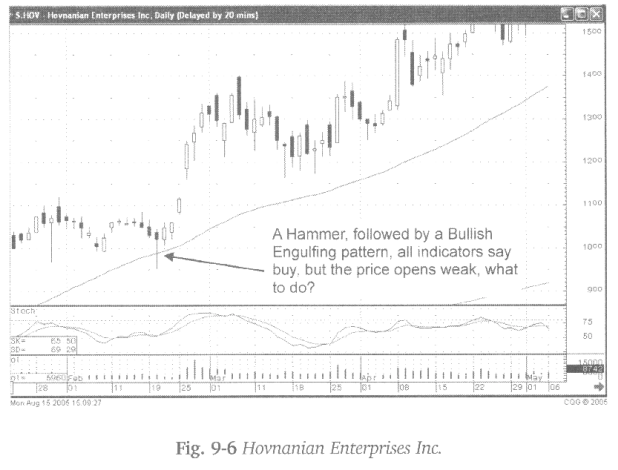
As
described in “Profitable Candlestick Trading” a Hammer signal can show the
investor great amounts of information. In the example of Hovnanian Enterprises
Inc, the buyers did come into the stock, executed the stop, and continued to
show strength. This made for a good trade.
If market
conditions were weaker or profit taking comes into a stock, it can create a
different evaluation after the close. Fig. 9-7, Movie Gallery Inc., for
example, creates an evening of less positive possibilities for the next day. In
this case, the price opened lower, came up during the day, and executed the buy
stop. Now the position closed lower than where it was bought, forming a Doji/
Harami. That could lead to a few days of consolidation. However, it is still
early in the up-trend. Stochastics are heading up. Fortunately, the buying
continues the next day and moves prices positive. Again, the overriding factor
boils down to the appearance of a Morning Star “buy” formation. As seen in the
chart, the Morning star formation was the bottom reversal point for a strong
uptrend.
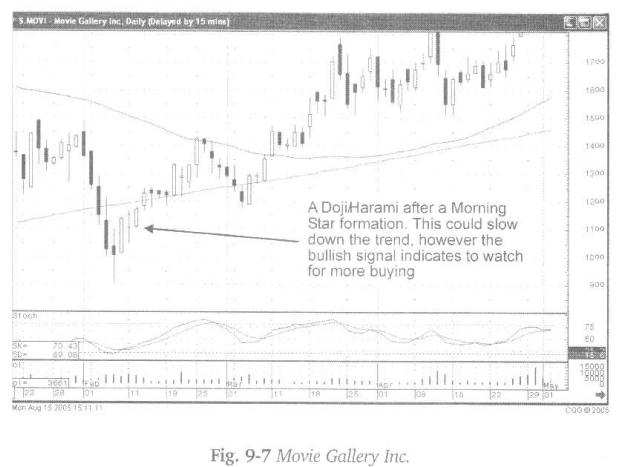
One of
the most common chart patterns is the Doji after a big up day. Consider the
dynamics that are occurring in the investors’ minds. In an example such as Fig,
9-8 (following page), Scansoft Inc., there has been a recent distinct
downtrend. All of a sudden, a Bullish Engulfing pattern emerges. The buyers are
stepping in. They have overwhelmed the sellers to the point of reversing the
trend. The following day after the big up surge, there will still be sellers
that will take advantage of being able to get out at a higher price than just a
couple of days prior. This continued selling is met with buyers coming into the
position. It is not unusual to see a Doji day after a big up day. However, when
the sellers see that the buying is now soaking up all the selling, they get concerned
and step out of the way. The following day should see higher prices.
Don’t let
the Doji Day concern you. It is the transfer of stock from selling hands into
buying hands. If the price opens higher the next day, you can be assured that
the buyers have now gained control. The rally should continue.
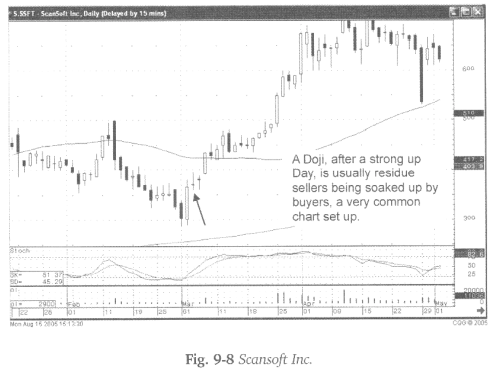
Entering
a trade involves a combination of evaluations. Just as you would make a
decision about what you are going to wear today involves a number of observations.
You may have heard the weather report saying that it is going to be cold and
rainy today. You peer out the window to see what the conditions are. You look at
the thermometer to see what the temperature is doing. You may open a door to
see if it is windy or calm. You do the same process when getting ready to enter
a trade.
You
investigate. You have already done your research and decided on what position
you want to buy in the morning if the conditions are right. You check the
futures in the morning to see what the general market sentiment appears to be.
You can check to see if the bid and ask have moved one way or the other during
the non-market hours. You can check on other stocks in the industry to see how
they will open. You may look for any news reports since the close yesterday
that would influence the stock price.
If
nothing seems out of kilter, based upon what the “buy” signal was indicating
to make your “buy” decision, then the final input will be how prices are
actually opening. If nothing appears to be out of line, purchase the position.
That is what the Candlestick signal had indicated should be done. Fine-tuning
the entry process will minimize getting into a bad trade. For each bad trade
that can be avoided, more opportunities are available to put investment funds
into a good trade. Eliminating a very small percentage of losing trades will
increase your returns in geometrical proportions. Avoiding a loss negates
having to make back those losses with a positive trade while using up that
next trade and time to get back to even.
“If skills could be acquired just by watching, every dog would
be a butcher.”
How To make High Profit In Candlestick Patterns : Chapter 8. Candlestick Entry and Exit Strategies : Tag: Candlestick Pattern Trading, Option Trading : when invest with the probabilities, how do invest with the probabilities, top 10 invest with the probabilities, why do invest with the probabilities - Invest with the Probabilities
